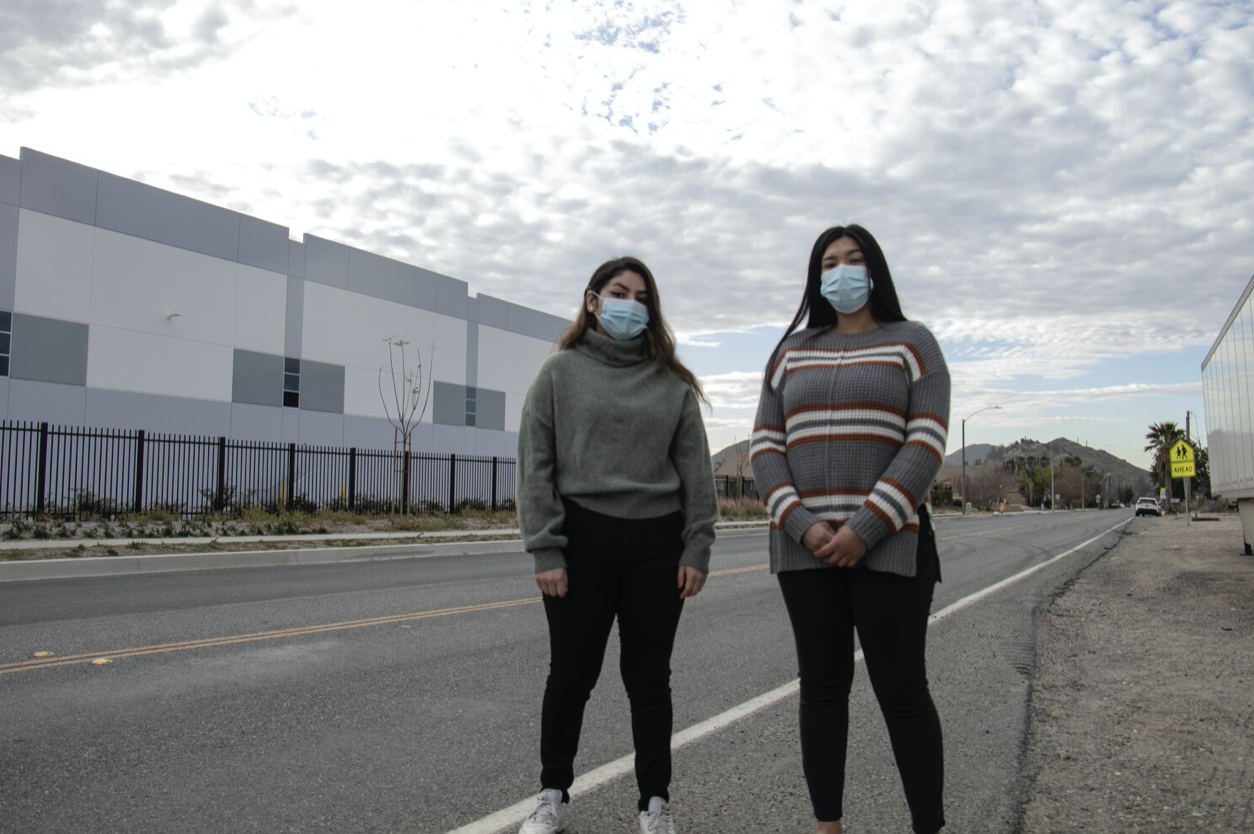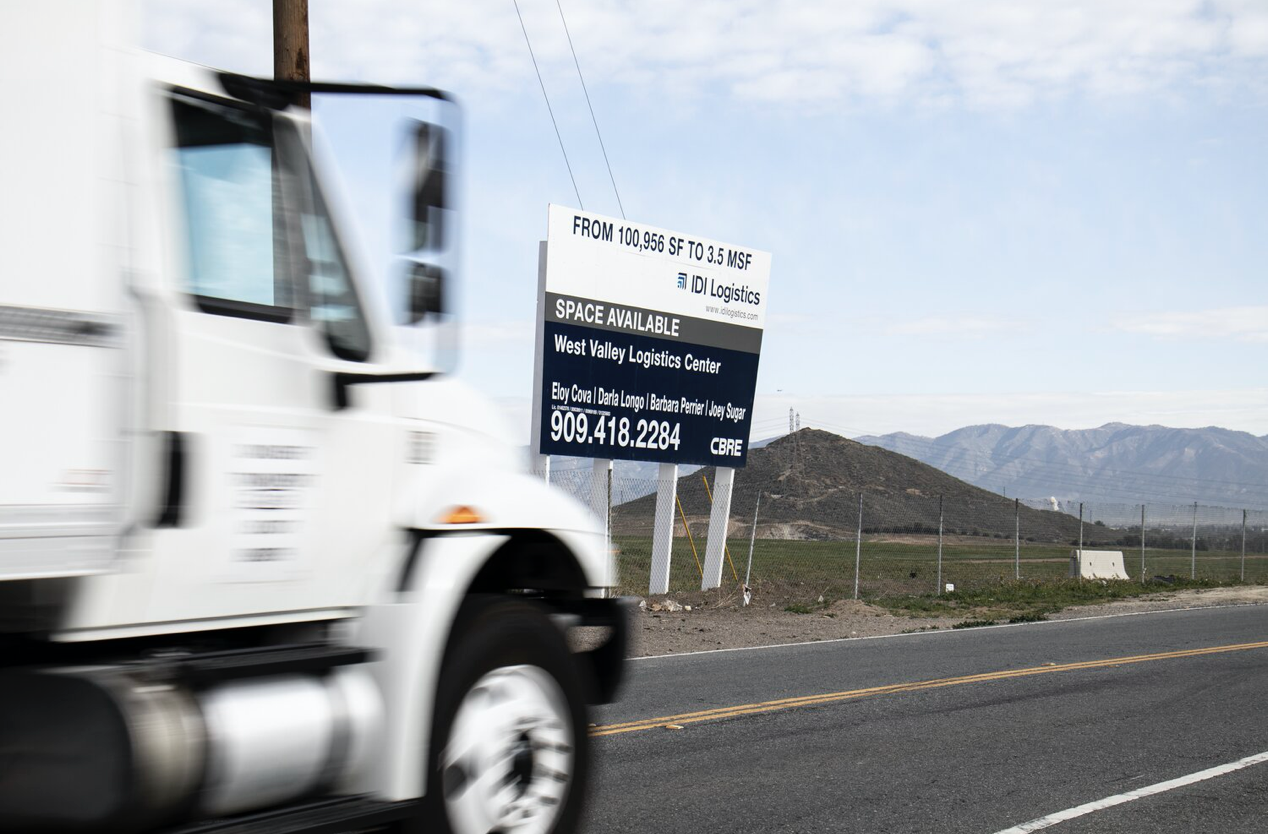Is Southern California ready to rein in the warehouse boom?

Warehouse growth is causing increased smog days and respiratory issues in low-income communities of color. Environmental Justice advocates say enough is enough
On the outskirts of Riverside and San Bernardino sits a small community that is facing a dramatic transition into a logistics hub for the e-commerce industry - the unincorporated San Bernardino County area of Bloomington. About 55 miles east of downtown Los Angeles, many of the homes in this BIPOC rural town are being torn down in favor of new, more lucrative tenants.
Standing literally 70 feet from homes, these large facilities occupied by the likes of Amazon, and other online retail giants attract thousands of trucks daily - contributing to Southern California’s worsening smog pollution and high cancer rates.
It led to the formation of community groups in the Inland Empire that galvanized an environmental justice movement across the freight corridors of Southern California to demand that an industry with a racist and violent history to address its pollution impacts.
Ahead of a critical vote on May 7, these same groups - together with organizations in Los Angeles County are aiming to force the South Coast Air Quality Management District (SCAQMD) to keep true to their clean air promises by passing a rule that will reign in the burgeoning warehouse and logistics industry.
“Warehouse development in our communities will further displace families, add traffic, noise and air pollution, as well as overpopulate communities that aren’t suited for the logistics industry,” said Melissa Gomez, a longtime Bloomington resident and member of local community group Concerned Neighbors of Bloomington. “We love our community due to its space and peaceful environment—and it’s unfair we’re now being forced out to meet the needs of the harmful supply chain.”
A ‘violent’ supply chain: The logistics industry’s toll on Southern California’s working class families

As the warehouse and logistics industry in Southern California continues to grow and make record profits, rising air pollution continues to burden low-income communities of color. African Americans, Latinos, and Native Americans make up about 60% of the population in San Bernardino County, where 52 million square feet of warehouse transactions were completed in 2020 - the most ever recorded.
Warehouses are “indirect sources” that create pollution by attracting diesel trucks and contribute to dangerous levels of nitrogen oxide and diesel particulate matter that causes asthma, respiratory issues, cancer, and premature death. That is why, since May 2018, when the South Coast Air Quality Management District (SCAQMD) directed its staff to develop an “Indirect Source Rule” (ISR) of regulatory measures to reduce emissions, environmental justice organizations across Southern California have fiercely advocated for regulation to reign in the industry.
“Many of us were college students when we first began to advocate for Indirect Source Rules,” explained Yassi Kavezade, a longtime clean air advocate and current organizing representative with the Sierra Club My Generation Campaign. “So we were pleased that the AQMD moved to begin this process a few years ago. But they have to stay committed and resist caving to the pressures of industry. Otherwise, we run the risk of seeing yet another process that won’t do anything but help polluters continue to pollute.”
Large warehouse operators and developers, with the political support of local leaders, continue to benefit from a broken business model that often puts the onus on small trucking operators to address emissions impacts. Meanwhile, Amazon is making massive earnings during a period that is also seeing a surge in covid related deaths across Southern California.
For instance, some San Bernardino County leaders have continued to zealously support land use decisions to change residential land to industrial use to accommodate warehouse operations, while also dismissing community concerns around industry encroachment. Some environmental justice advocates say this is textbook environmental racism—industry reaping financial and institutional gains off the backs and lungs of workers and their families.
“This pandemic has taught us one crucial thing,” said Andrea Vidaurre, senior policy analyst with the People’s Collective for Environmental Justice (PC4EJ). “That the biggest winners during this difficult time are the corporations and logistics industry players like Amazon and Walmart, who continue to make record profits while workers and their families struggle to live and breathe.”
The disproportionate impact that COVID-19 has already had on environmental justice communities is further amplified by weak regulation oversight of the warehouse and logistics industry. According to a study by Harvard, pre-existing conditions as a result of long-term exposure to air pollution puts individuals at greater risk of death from COVID.
“Warehouses are a massive source of air pollution that bring thousands of polluting truck trips through BIPOC communities everyday,” says Adrian Martinez, attorney with Earthjustice. "It’s clear that the largest companies in the world are benefiting from placing their operations in these communities, and it's only right that they be required to reign in their toxic emissions.”
Electrifying warehouses: A pathway to zero-emissions that can create jobs and help save lives
The solution to curbing diesel emissions from trucks, advocates say, is through the SCAQMD’s warehouse Indirect Source Rule. The current draft rule will require each new warehouse to address emissions impacts by adopting cleaner technologies to transport goods and power up their facilities.
Specifically, the rule would impose what’s called a “Warehouse Points Compliance Obligation” (WCPO) on warehouse operators that they would satisfy by accumulating “Warehouse Actions and Investments to Reduce Emissions” (WAIRE) points by adopting zero-emission trucks, yard hauslers, electric charging stations, on-site solar panels, and installing air filtration systems in community homes near facilities within a 12 month period. According to the draft rule, warehouse operators and owners could transfer excess WAIRE points from one facility to another they have control over.
The rule will also establish a reporting requirement to require warehouse operators to share key data related to operations, including the number of truck trips and which companies are acting as operators—information environmental justice and clean air advocates have been seeking for years. If approved, the rule would begin requiring the warehouses to comply with regulatory requirements beginning in August 2022.
Advocates say that through the Indirect Source Rule, warehouse operators will drastically curb diesel emissions and help facilitate job growth in a sector that is currently struggling to create a strong pathway to the middle class for Inland Empire families. For example, the need for electric trucks and charging infrastructure to support them can create quality jobs in the green energy, transportation, and manufacturing sectors.
“We’re already seeing what the manufacturing of zero-emission buses has done to create good-paying, union jobs in Los Angeles County,” said Vidaurre. “Pushing the logistics industry to invest greatly in zero-emissions will help with our region’s economic recovery and bring environmental justice to our communities.”
The rule isn’t free of detractors, however, with both the warehouse and fossil fuel industries advocating hard against the rule. The former argues stringent rules and regulations will only drive operators and potential tenants away from places like the Inland Empire, while the latter continues to push air regulators to invest in “near zero” technology that burns methane gas.
According to a report by Industrial Economics, Inc., there is no projected warehouse relocation that will result from the establishment of Indirect Source Rules. In fact, warehouse operators seem to be generally unfazed with rule developments and continue to expect massive gains in the years to come.
Nonetheless, advocates want the SCAQMD to use its legal authority for warehouse operators to clean up their act and stop passing the costs of their operations on to residents and prevent any counterproductive investment in near-zero technologies from the gas industry. Southern California more than likely won’t meet their air quality attainment targets this year, and if they want a chance of doing so in the near future, advocates say, it must start taking more aggressive action by passing the rule.
“AQMD must make good on its promise to pursue a strong Indirect Source Rule that will help clean up the warehousing industry through zero-emissions investments,” said Kavezade. “People’s livelihoods are depending on this.”
